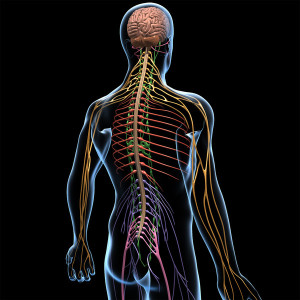Sleep and Your Body Type
In the winter, days are short and nights are long. The weather is cold, and like bears in the woods, many of us would love to hibernate during this season. However, even with the darkness and cold, sometimes sleep can be elusive, frustrating people with bouts of insomnia and other sleep difficulties.
Little is known about the physical causes of sleep disruption. Sleep research is a new area of study. Other than travelling through time zones and shift work, most sleep disorders are caused by anxiety. Knowing how your nervous system reacts to changing circumstances (like shift work) or other stressors in life is the key to bringing on easier sleep.
What Type Are You?
There are 2 nervous system types: Parasympathetic Dominant (PD), and Sympathetic Dominant (SD).
Parasympathetic Dominant (PD) individuals tend to be calm, relaxed, and can sit for long periods of time, but they need movement, lest their calm, relaxed nature lead them towards an overly sedentary lifestyle. Aerobic movement is helpful to stimulate circulation. PD people need protein, including red meat at least once per week. Coffee activates the brain, and acidity is good for the blood.
Sympathetic Dominant (SD) people have very active minds. The SD strength is the ability to think all the time – from the moment they wake up. Their challenge is being able to turn off the brain long before bedtime. They can also slip into overthinking issues turning minor stress into anxiety. They do not do well sitting for long periods of time, needing to get up and move for a few minutes at least every hour or they can get quite restless and unproductive. For SD people, it is helpful for them to relax at times – yoga is a good exercise to balance and relax the body and mind. The SD person needs to know that coffee and other stimulants (even stimulating the brain late at night with emails) can stop them from sleeping for hours.
When the Sympathetic Dominant SD person talks about the need to relax and sleep better, the Parasympathetic Dominant PD often has a hard time understanding them. The PD person feels they only need to stop moving for a few minutes and they might find themselves napping. Many times the SD person feels there is something wrong with them. They see the PD as “normal” – being able to sleep as soon as their head hits the pillow, no matter what’s going on in their lives. It is important for the SD person to understand the extremes of their brain and nervous system behaviour so that they can modify their chemistry and thinking in order to calm and sleep more easily.
The PD person needs to make sure they have eaten enough animal protein and balanced that with fruits and vegetables in a day so that adrenaline does not keep them awake at night. The most common way for the PD person to be kept awake at night is from the body overworking on adrenaline from lack of protein. For them, balanced eating is the key, including occasional concentrated protein like red meat.
The SD person also needs regular amounts of animal protein to avoid adrenaline, but they balance with eggs, fish and poultry. Their body likes to be alkaline, and vegetables are more helpful than fruit. The SD person may find Magnesium supplementation can be very helpful to aid sleep.
I’ve summarized this information in a comparison table which you can access by this link if you wish to copy it or save it in this format.
Nervous System Type Comparison Table
Remember: your Nervous System Type is a scale, not an absolute given. Once you understand your tendency towards Sympathetic Dominant or Parasympathetic Dominant, it is possible to modify your behaviour for better sleep. The goal is more balance to get to sleep easily, stay asleep and wake up 8 hours later refreshed.
For your amusement – a short animated video about sleep averages, sleep positions, and results of not getting enough sleep.

